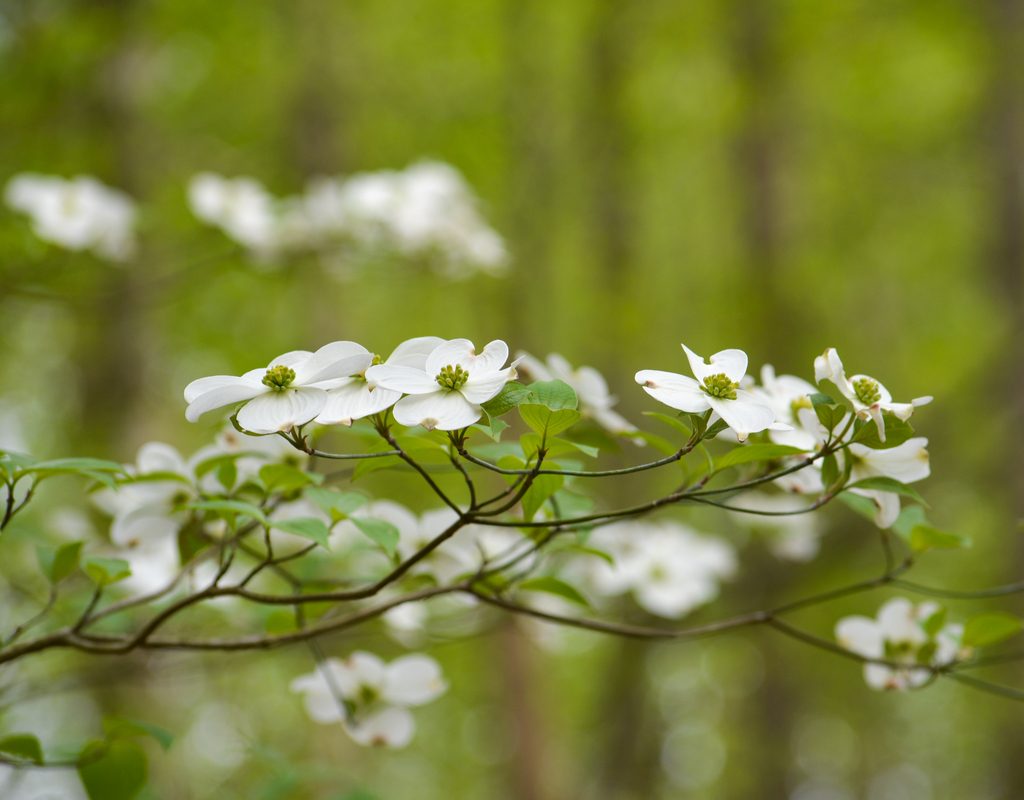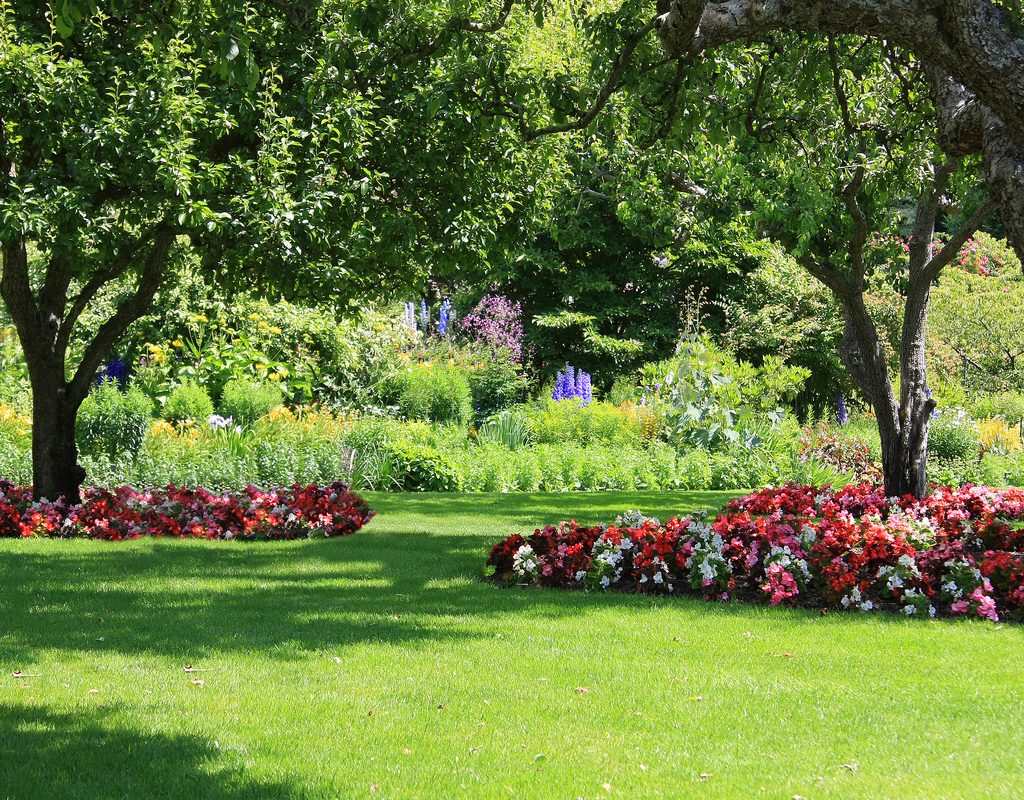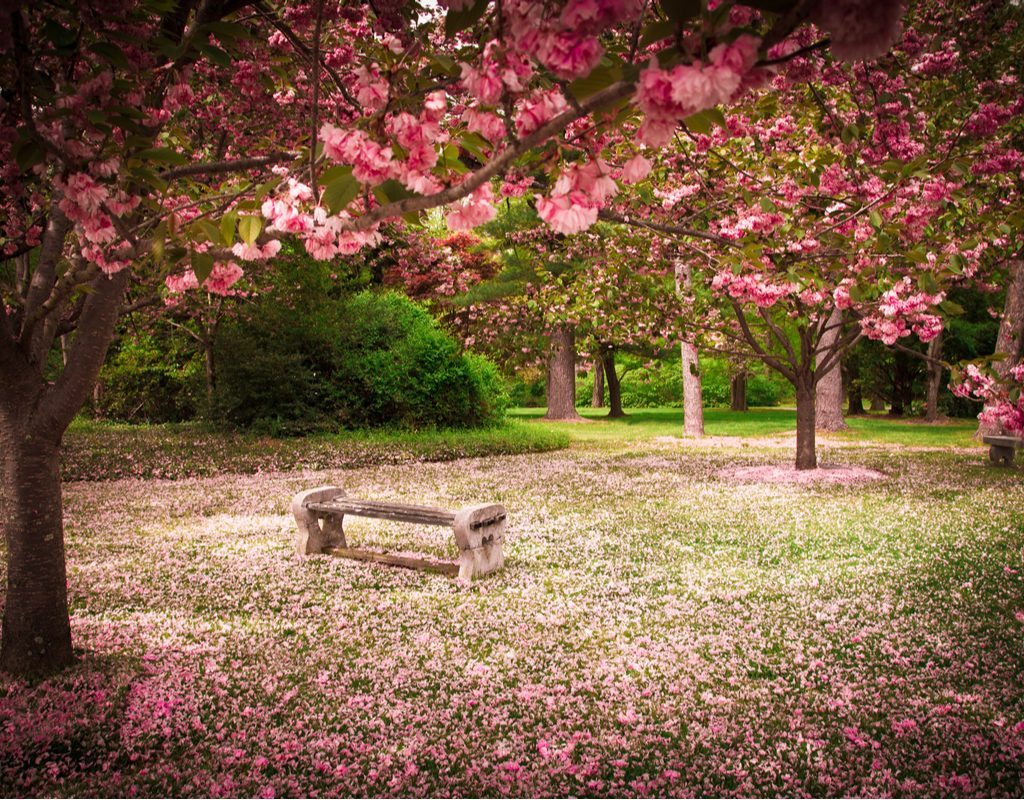
Trees in the landscape help to beautify the property, adding intrinsic and monetary value to the home. They provide visual structure to a landscape design, and create microclimates for plants growing in their shade. If properly sited, they can also reduce home energy consumption by passively cooling the home in the hot summer while allowing the warming rays of sunlight to reach the house in winter. A tree, or group of trees, is an invaluable asset to any home. But how do you choose the right kind of tree to plant?
The place to start is by choosing between flowering versus leafy trees. Flowers and foliage aside, these broad categories fill very different needs and spaces. Read on as we examine these two kinds of trees and consider when each type would be the best choice.
Flowering versus leafy trees
There’s no botanical distinction between “flowering” and “leafy” trees, so let’s start with the traits they share. Both categories prefer full to partial sunlight and typically grow over time to dominate their portion of the landscape, which means they require ample space. Proper spacing for any tree is based on its average growth rate and mature size.
With very few exceptions, trees are not well suited for long term life in container plantings, sidewalk strips, or other small, enclosed spaces. And, although we’ve named the categories “flowering” and “leafy,” they all produce flowers.
Now, on to the key differences.
Size and growth rate
Leafy, or shade trees, grow large enough to provide shelter from the hot sun, and do so in a reasonable amount of time. Many, like maples, oaks, and elms, are common forest trees that naturally grow to towering heights of 50 or 80 feet high in their home range. In residential settings, expect shade trees to grow 35 to 50 feet high within two decades.
Flowering trees tend to be smaller and grow more slowly. Often these are naturally found in the forest understory, or at the edge of the woods, where they grow to a maximum height of about 30 or 35 feet. This group includes such beloved species as dogwoods, redbuds, and flowering cherries. These trees grow wide and relatively low, often growing no higher than 25 feet within 20 years.
Tree size gives the landscape a sense of scale. Large landscapes benefit from the visual anchor of shade trees, with one or more flowering trees mixed in for added interest. Where space is limited, large trees can overwhelm. In many smaller urban settings, a single compact flowering tree may be the best option.

Ornamental value
Shade trees bring more to their game than just a dense, leafy canopy. They also brighten up the autumn landscape with their late season foliage. In winter, the bare tree still provides structure and scale. Some shade trees also feature attractive bark for added interest.
Flowering trees, too, may offer bright fall foliage or ornamental bark. Of course they also have showy flowers for a few weeks, mostly in spring or early summer. Some offer the added benefit of attractive fruit in summer or fall.
While all trees add something ornamental to the yard, the flowering trees take the cake. They have the unique ability to shout “Spring is here!” as they emerge at the end of a drab winter.
Maintenance
When we think of maintenance with trees, maybe the first thing that comes to mind is raking leaves. Since they’re much larger, shade trees ensure that their owners will enjoy a healthy dose of leaf pickup each autumn. Other maintenance requirements could include infrequent pruning to promote a healthy branch structure that resists strong winds. For the absolute healthiest and strongest trees, book an annual diagnostic visit with a certified arborist who can perform a checkup and recommend preventative treatments for large, mature trees.
Flowering trees drop leaves in autumn, but because they’re smaller, the mess (per tree) is smaller as well. But they also drop flower petals at the end of their bloom cycle, and some drop seeds or fruit at other times of year. So, cleanup may be a bit more constant with some of these types. As with shade trees, flowering trees benefit from a certified arborist’s critical eye.
Generally speaking, tree maintenance is similar across the board. Both shade and flowering trees require some extra clean up at times, but neither type stands out as especially needy. Plant trees that fit the space to avoid unnecessary pruning. Top-dress tree mulch once or twice per year and give them water during drought.

Longevity
Shade trees are the apex species of the forest, a sign of maturity and stability. If they’re planted in the proper location and not abused with excessive soil compaction or digging in the root zone, shade trees can live for centuries.
Most flowering trees are pioneers. They inhabit forest clearings for several decades until they’re shaded out by the larger trees. In a landscape setting, flowering trees typically complete their life cycle in less than fifty years.
Which is best
Both shade trees and flowering trees complement one another in the landscape. In new plantings, flowering trees steal the show for the first couple of decades as the larger shade trees quietly attain size and structure. With age, the two fulfill different but equally valuable roles within the aesthetic of the landscape. The best choice is the one that fits the physical space and fulfills the needs of the landscape.


